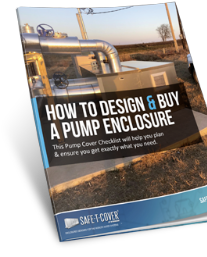For years we’ve been educating civil engineers and designers about the dangers of installing a backflow preventer in a utility vault. We research and try to keep up on the latest statistics tied to OSHA confined spaces. But we typically find the testers that we talk to provide great insight about utility vaults.
We hear from testers all over the country talking about some of the things they find in utility vaults when they open it up to test a backflow preventer. Of course, there’s bugs and other animals, but one of the things they encounter the most is high water. Utility vaults flood, which significantly increases the risk for a cross-connection.
Chris Mayhew is a certified tester in Richmond, VA. He pulled out his phone and recorded a flooded vaults he recently discovered.
How Long To Empty This Utility Vault?
Chris shared this video with us. You can see how deep the water is inside the utility vault. Wonder how long it took to pump the vault dry before Chris could test the backflow assembly? Chris pumped out the water, but the damage was already done.
Utility Vault Floods Near Building
In another video, you’re going to see a utility vault that is completely flooded. You’ll hear someone say that he’s been pumping for 15 minutes, but as you’ll see, it’s barely put a dent in the high water.
This tester tracks the flooding issue to a roof drain that’s only a few feet from the building. All of the rainwater is coming off of the roof, out of the drain, and into the utility vault, submerging the backflow preventer inside.
Utility Vault Floods Near Street
In this third video, someone finds another flooded utility vault, but the circumstances are completely different. This vault is nowhere near the building. It actually sits between the street and a parking lot, next to a flower bed. There’s no easy way to tell how this vault flooded, but it did. The backflow preventer inside was fully submerged.
The man pumped out the water, but once again, the damage was already done. A backflow preventer that sits in water for any length of time is at risk for a cross-connection. The test cocks can leak and the dirty, contaminated water can cross-connect with the clean water.
Not only do you incur the cost of having the water pumped out of the vault, but you’re also going to have to deal with the repercussions of a potential cross-connection.
Consider A Backflow Cover
The fact of the matter is that utility vaults flood often. Testers we’ve spoken to over the years (including Chris) say about half of the vaults they encounter are flooded and almost all of them have some level of water in them. Rainwater will find its way inside.
The safest, most cost-effective way to house your backflow preventer is with an above-ground backflow cover that is outside of your building. By using an enclosure, you eliminate the cross-connection risk. That’s because each enclosure has a drain flap that lets water out IF it the RPZ were to dump water.
To learn more about backflow covers and enclosures, and to find out more about why you should make the effort to get backflow preventers out of utility vaults, check out our web page “Think Outside the Vault.” You’ll find valuable information there that will explain what makes vaults so dangerous. You’ll also get a free chart that compares utility vaults to enclosures.
Chris Mayhew is a certified tester and instructor in Richmond, VA. He teaches both a 40-hour backflow tester certification course as well as an 8-hour installation course. He completed the University of Florida (UF), Training, Research and Education for Environmental Occupations Center (TREEO) and holds multiple nationally recognized certificates and a Commercial Plumbing Inspector Certificate from the ICC.





